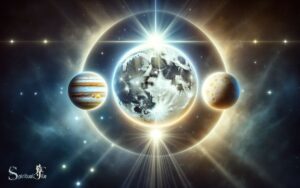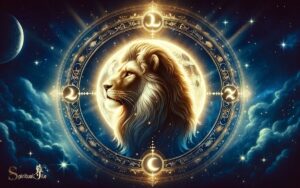Spiritual Meaning of Moon and Stars: Cyclical Nature!
Like a painter with a celestial canvas, I’ve always found the moon and stars to be more than mere lights in the night sky; they’re symbols laden with spiritual meaning.
The moon, with its ever-changing phases, reflects the cyclical nature of our lives, reminding me that transformation is constant. Its pull on the tides mirrors its influence on our emotions and inner rhythms.
As for the stars, they’ve long been spiritual guides, their constellations telling ancient stories and offering a sense of direction. I’m drawn to the idea that celestial bodies, through astrology, might provide insight into our personalities and destinies.
Even the rare dance of eclipses seems to signal moments of profound cosmic shifts. To me, the moon and stars are silent teachers, whispering age-old wisdom to those who gaze up with a seeking heart.
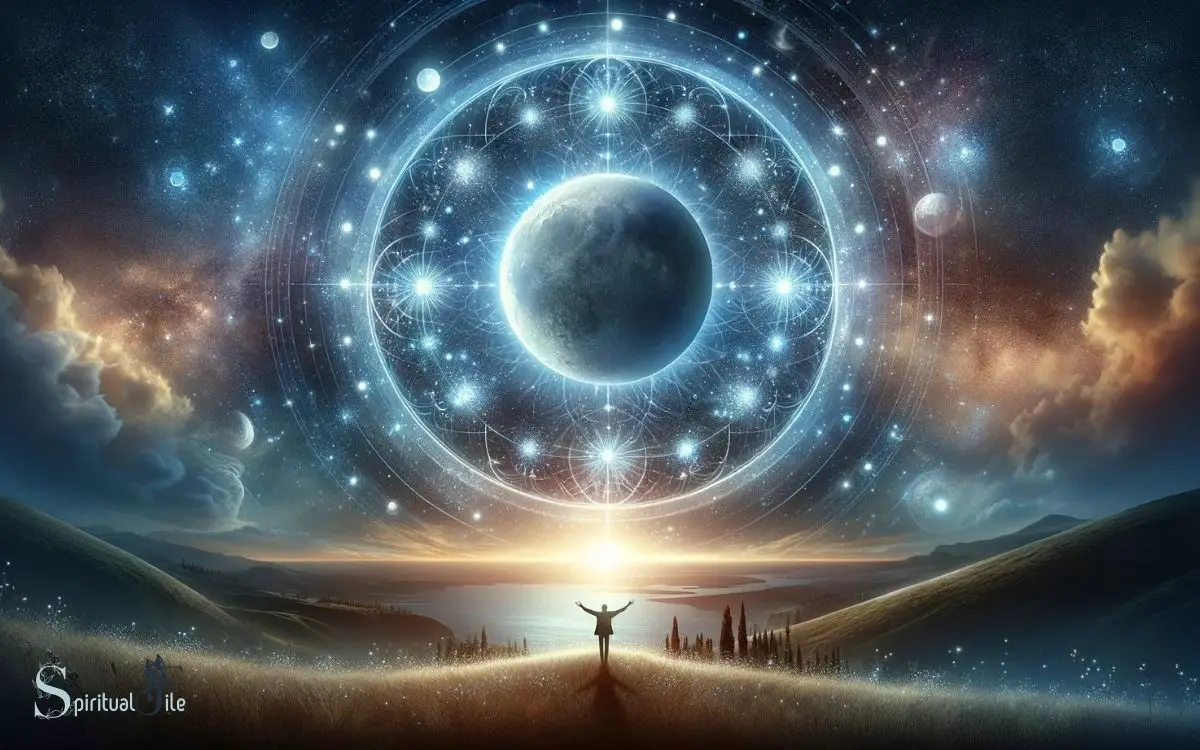
Key Takeaway
The Moon’s Mystical Cycles
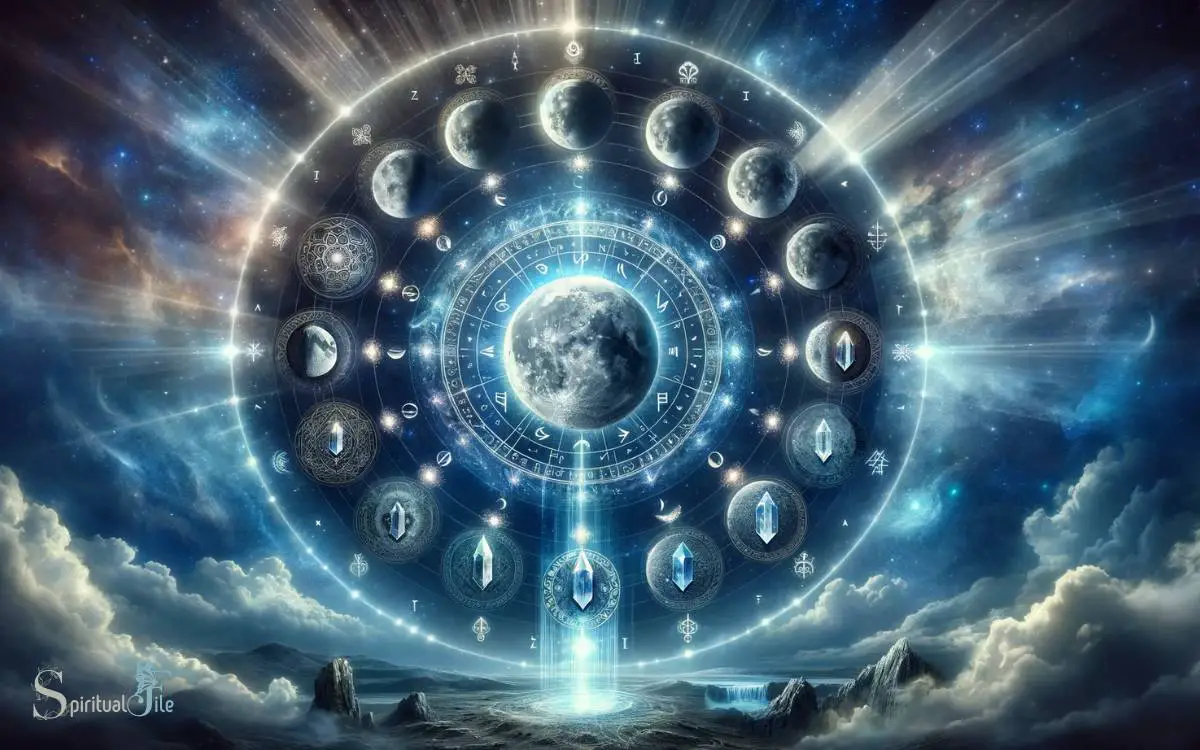
The Moon’s phases, from new to full, have long captivated my spiritual curiosity with their rhythmic dance through light and shadow. This cyclical transformation symbolizes the impermanence of existence and the perpetual flux within the cosmos.
I’ve come to appreciate the Moon’s cycles as a mirror of the human condition, with its ebbs and flows mirroring our own periods of growth and introspection. The waxing phase, incrementally illuminating the night, suggests the accumulation of knowledge and wisdom.
Conversely, the waning phase, where the light gradually diminishes, represents a time for releasing and letting go. It’s an intricate celestial choreography that encourages contemplation on the transient nature of life, urging us to align our inner cycles with this celestial guide.
Lunar Phases and Symbolism
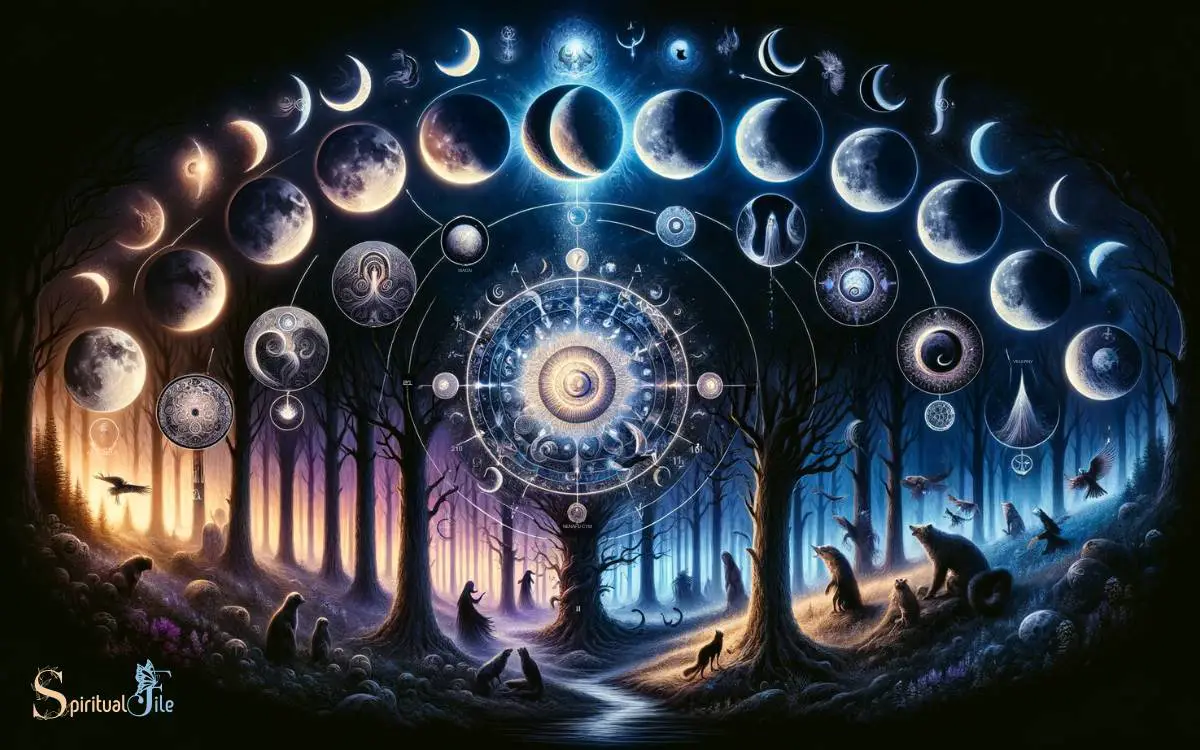
In light of these mystical cycles, I’ve found that each lunar phase carries its own unique symbolism that resonates deeply with spiritual seekers. The new moon, often invisible to our eyes, represents beginnings and the birth of intentions.
It’s a time to set forth desires into the universe, embodying potential and promise. As the crescent moon waxes, so does one’s energy, building towards the full moon—a symbol of manifestation, culmination, and clarity.
Here, the moon’s full face reflects our aspirations in their most illuminated state. Conversely, the waning moon suggests release, a period for letting go of what no longer serves us.
Finally, the dark moon, or balsamic phase, encourages introspection and rest, preparing us for the next cycle of growth.
The Stars as Spiritual Guides
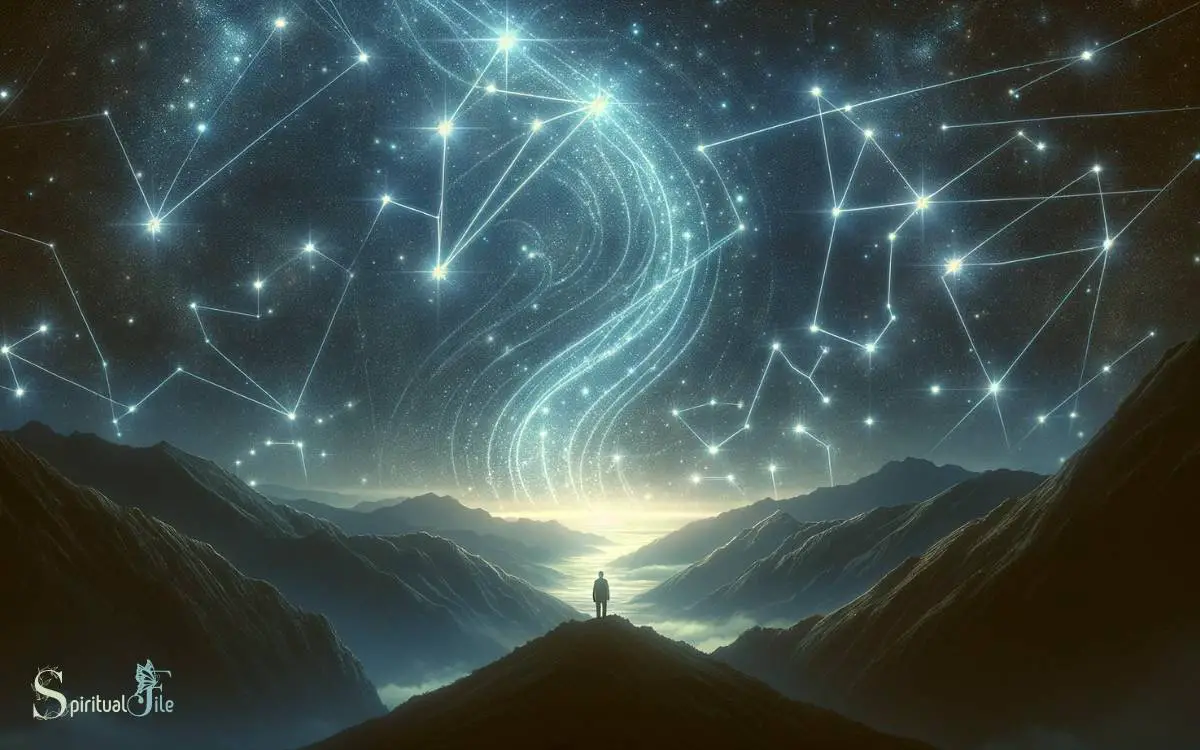
Often, I’ve looked to the stars as celestial beacons that guide my spiritual journey, offering insight and perspective. In their unchanging patterns and rhythms, they serve as a profound metaphor for the constancy amidst life’s chaos.
I’ve come to understand the stars’ placements and movements as not mere chance, but as cosmic signposts, imbued with ancient wisdom that transcends generations and cultures.
Reflecting on the stars’ guidance, I consider their role in navigating human consciousness—a role celebrated in countless traditions.
They’re a source of inspiration, a means to ponder our existence, and a navigational tool that directs us back to our inner compass. In essence, they remind me that there’s a larger order and design, encouraging me to align with a universal sense of purpose.
Constellations and Cultural Myths
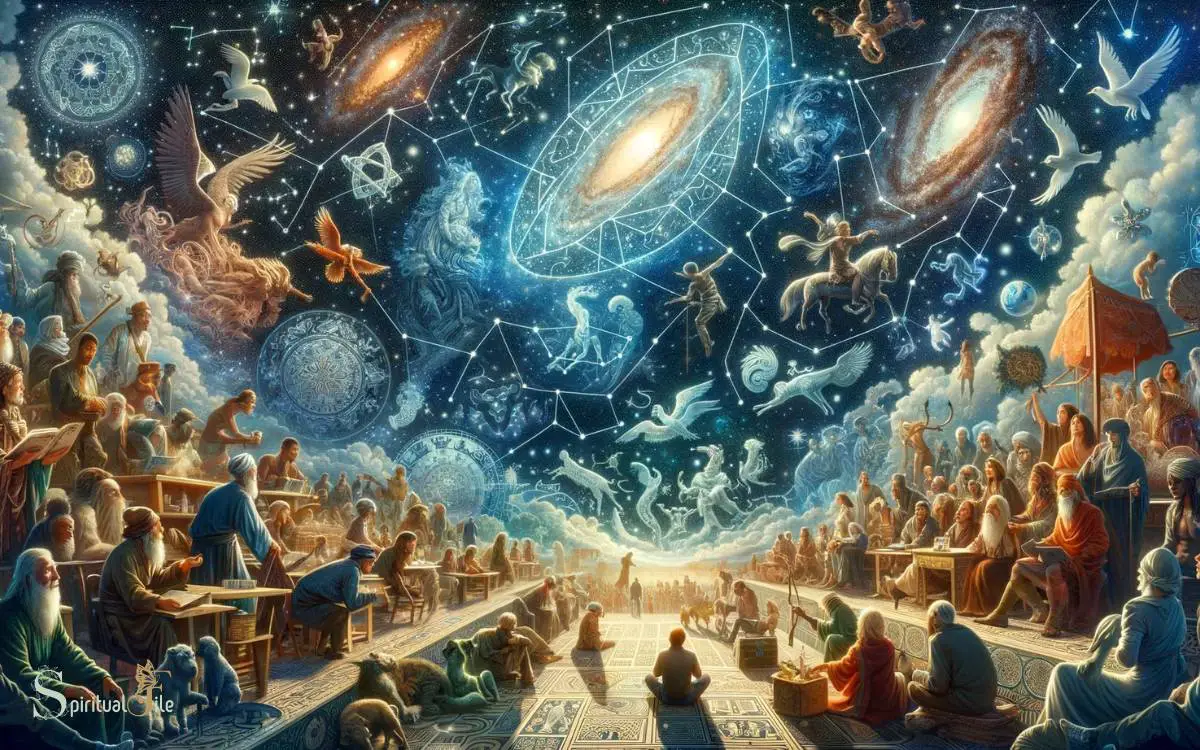
Constellations, as groups of stars forming patterns, carry cultural myths that have enriched my spiritual understanding of the night sky.
These celestial tapestries have served as a canvas for humanity’s greatest stories, providing insight into how ancient peoples made sense of the cosmos.
Reflecting on these myths, I’ve found that:
- The Greek tale of Orion the hunter highlights themes of hubris and cosmic justice.
- Ursa Major, the Great Bear, has differing origins in Native American lore, each teaching respect for nature.
- The tragedy and romance in the story of the Chinese Weaver Girl and the Cowherd (represented by Vega and Altair) illustrate the human yearning for connection.
- Norse myths portray the constellations as the homes of gods, reinforcing the idea that the divine permeates the universe.
Contemplating these narratives, I’ve realized that each constellation’s myth serves as a reflection of the societies that created them, imbuing the stars with profound cultural significance.
Astrology and Celestial Influence
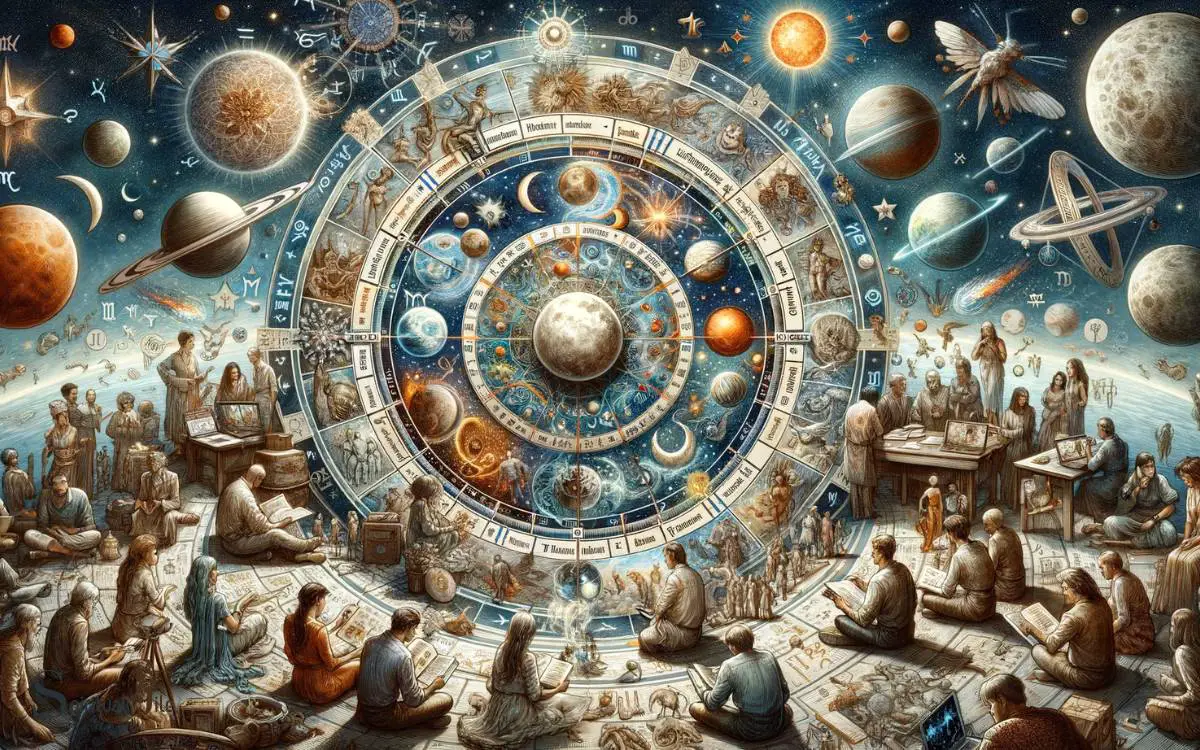
As I turn to the study of astrology, it becomes clear that the traits associated with Zodiac signs have long been contemplated as reflections of human personality and behavior.
The notion that planetary alignment can exert an influence over individuals and events on Earth invites a critical examination of empirical evidence versus anecdotal experiences.
This interplay between celestial movements and earthly affairs has not only shaped spiritual beliefs but also prompted ongoing debate within the scientific community.
Zodiac Sign Traits
Exploring the zodiac signs’ traits offers insight into how celestial bodies, particularly the moon and stars, shape our personalities and spiritual journeys.
By considering the traits attributed to each zodiac sign, we can reflect on the profound influence of astrology in our lives.
- Aries: Bold leadership, emblematic of spring’s initiating force
- Taurus: Steadfast reliability, reflecting the grounding nature of Earth
- Gemini: Adaptable communication, mirroring the duality of celestial twins
- Cancer: Intuitive emotionality, akin to the moon’s tidal pull on our inner waters
These astrological archetypes delve into a scholarly realm of symbolism and myth, engaging with our quest for self-understanding. As we ponder these traits, we’re drawn into a deeper reflection on how alignment with the cosmos can guide us.
This contemplation naturally leads us to consider the effects of planetary alignment on our spiritual being.
Planetary Alignment Effects
Reflecting on the zodiac traits, I’m intrigued by how planetary alignment can profoundly shape our spiritual essence and daily existence.
The positions of celestial bodies, especially planets within our solar system, are thought to exert considerable influence on our individual character and the unfolding of events.
In astrology, the intricate dance of planets as they traverse through the signs and houses is believed to create a symphony of energies that resonate with our being.
This celestial choreography, with its conjunctions, squares, and oppositions, is not merely a backdrop but an active force that interacts with our psyche.
The analytical approach to understanding these alignments involves delving into the symbolism and archetypes associated with each planet, contemplating their mythological roots, and observing their manifestations in the personal and collective spheres.
Eclipses and Cosmic Shifts
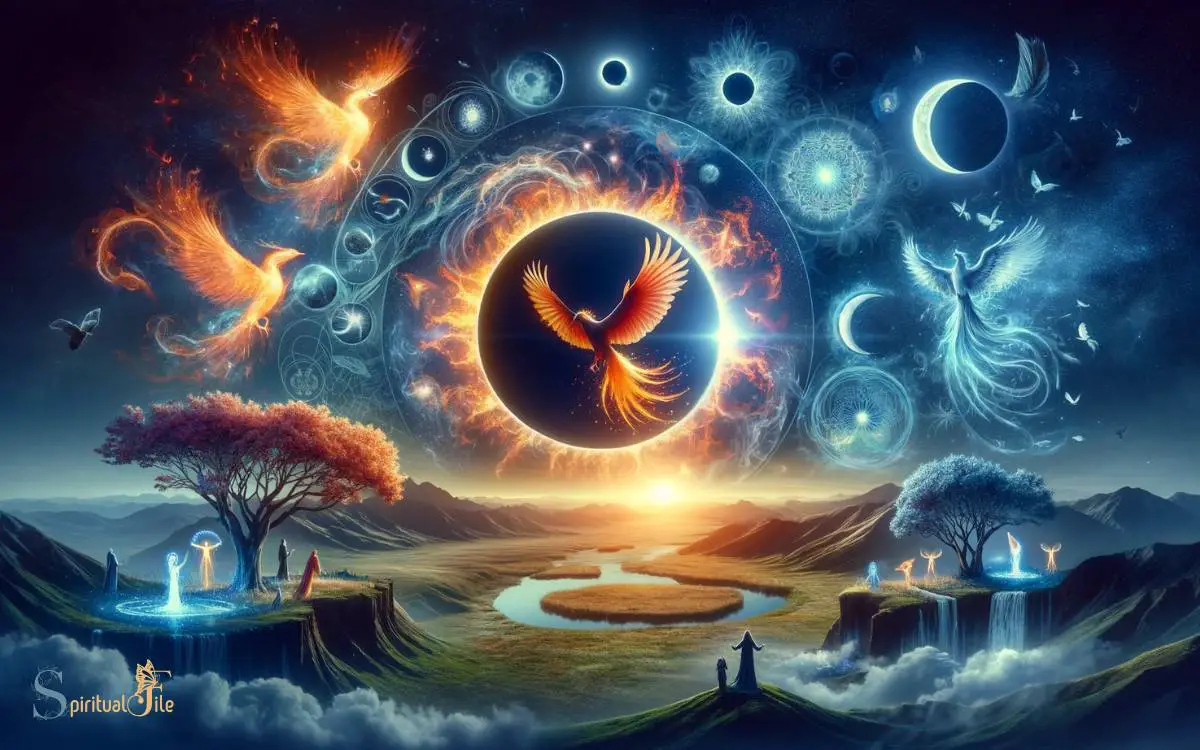
I’ve always been captivated by the transformation that eclipses signify, heralding profound spiritual shifts in both our personal and collective consciousness.
These celestial events are not merely astronomical phenomena; they carry deep symbolic meaning that many cultures and spiritual traditions have recognized throughout history.
- Ending and Beginning: Eclipses often symbolize the end of one cycle and the beginning of another, invoking reflections on transformation.
- Inner Work: They encourage introspection, pushing us to confront our shadows and embrace growth.
- Universal Connection: Eclipses remind us of our place in the cosmos, highlighting the interconnectedness of all things.
- Heightened Energies: These periods are thought to amplify energies, offering a potent time for setting intentions and manifesting change.
In contemplating eclipses, I appreciate their dual nature, representing both the concealment and the revelation of light—echoing the constant flux within our spiritual journeys.
Conclusion
In my contemplation of the cosmos, I’ve discerned that the moon and stars are not mere celestial bodies but a tapestry of spiritual symbolism. They are the architects of the night, guiding us through life’s ebb and flow.
As I gaze upon them, I’m reminded that we’re all under the same sky, woven together by myths and cosmic energy. Indeed, the heavens are a celestial symphony, with each phase and star a note in the melody of our existence.


